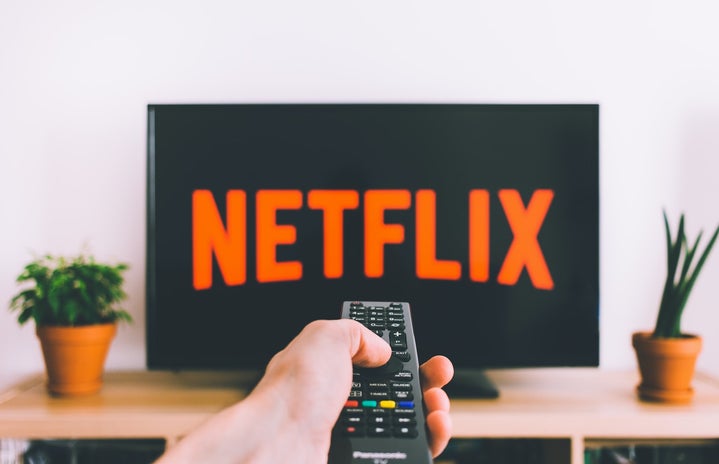The new Netflix series, Heartbreak High quickly became a massive hit across the globe. The well-known Australian 90s show that follows the teens of Hartley High has been rebooted and features a brand-new cast. Since its premiere on Sept. 14 of this year, the TV show quickly found its way into Netflix’s Top 10 Most Watched List, ranking number six in just its first week. Heartbreak High received 18.25 million hours viewed in one week alone, and the show has already had rumors of a season two. So, what makes this series so popular amongst viewers around the world, and what differentiates it from other teen dramas?
Heartbreak High viewers have expressed that the TV show is an accurate representation of Gen Z. Where many TV shows fall flat when it comes to portraying how Gen Z interacts, their humor and their vocabulary, Heartbreak High has been praised by fans for truly understanding the new generation. For example, fans have expressed their thoughts on the show on social media by recording clips of some of their favorite moments including funny one-liners like “pack it up Eleven” after one of the main characters, Harper, shaved her head. Or in another scene when Quinni asks, “is this your 13th reason?” in which TikTok user, @imurgency replied, “this has to be the first show about Gen Z that actually sounds like Gen Z wrote this sh*t.” At the same time, the TV show has been applauded by watchers for accurately portraying how Gen Z interacts with social media like Snapchat and viral videos without “overdoing it” as mentioned by Twitter user @pumpkinjayy.
A major element of Heartbreak High that is commendable amongst viewers is the diverse cast. The cast is filled with individuals from several different ethnicities, identities and communities that are bringing Australia’s diverse culture to the big screen. With the main characters being made up of backgrounds such as Indian Australian, Anglo-Sri Lanken, Australian First Nation and mixed race, many fans find it incredibly rewarding to consume media with characters that represent them. Even one of the actors from the series, Thomas Weatherall emphasized how important playing an Indigenous character was to him. “Reading that script the first time, to see a character like Malakai, as an Indigenous man…for me I personally haven’t seen a lot like that so it was a really special thing.”
Speaking of inclusivity, the Netflix series has been celebrated by audiences across the globe for its queer representation. As the majority of Heartbreak High’s characters are part of the LQBTQ+ community, fans truly appreciated the TV show’s well-written characters and cast members with typically underrepresented identities. For instance, Darren Rivers is a queer and non-binary character who goes by they/them pronouns. Their love interest, Douglas “Ca$h” Piggott, is an asexual drug dealer and food delivery driver. The TV show also includes characters who aren’t entirely confident about their sexual orientation. For example, Malakai Mitchell is a basketball player new to Hartley High and struggles with his sexuality.
What truly made Heartbreak High stand out was its representation of autism. One of the main characters is Quinni Gallagher-Jones, a raw, fun, lesbian character who is autistic. The character is portrayed by Chloe Hayden, who has autism and is a neurodiversity advocate. Heartbreak High takes audiences on a journey as Quinni deals with the effects of her autism. The show explores her everyday life, from her morning routine list to stressors like a crowded restaurant to her intimate relationships. Fans commented on the TV show saying this is one of the first times they felt their autism was accurately portrayed. Twitter user, @rebeccasgf stated, “I’m crying I’ve never seen my experience represented like this before.”
Additionally, the fact that an autistic character is portrayed by an autistic actor, instead of a neurotypical actor, is an incredibly essential element to playing Quinni. Actress Chloe Hayden emphasizes the significance by stating, “The thing is, media has such a hold on us as to what we believe is real life. So, people see autistic people represented in media played by non-autistic men and they go, ‘That’s what autism is.’ So then they see me and they’re like, ‘You’re a young woman who knows how to speak and who can make eye contact and is doing OK for herself. You can’t be autistic, that’s not what my idea of autism is, therefore you cannot be autistic.’”
Chloe Hayden’s portrayal of Quinni is not only educating audiences of how autistic individuals are and interact with others, but also redefining autism in the media and breaking away from neurodivergent stereotypes.
The characters of Heartbreak High deal with many of the same issues and conflicts in other teen shows, but what audiences seem to really appreciate about the series is its authenticity. Fans across the globe have applauded Netflix and Heartbreak High for their representation of Aussie culture and creating media for individuals of different races, backgrounds and sexual identities.
Want to see more HCFSU? Be sure to like us on Facebook and follow us on Instagram, Twitter, TikTok, YouTube and Pinterest!


